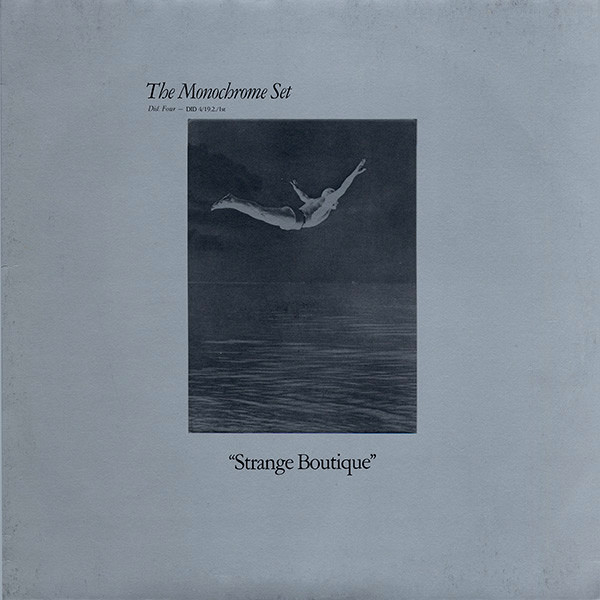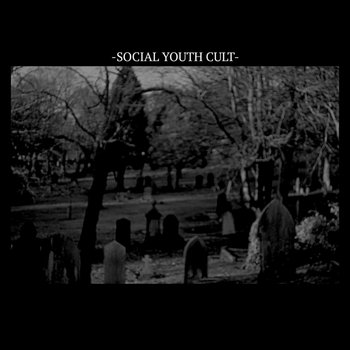
Formada em Londres no começo de 1978, a The Monochrome Set é uma daquelas bandas que caminharam na margem do sucesso comercial, mas deixaram marcas profundas no subterrâneo pós-punk britânico, especialmente entre músicos atentos e colecionadores devotos. Misturando charme art pop, senso de humor peculiar e riffs angulosos, a banda foi uma das mais originais e excêntricas do caldeirão criativo do final dos anos 70.
A história da The Monochrome Set começa com os destroços de um grupo universitário chamado The B-Sides, que teve entre seus membros ninguém menos que Stuart Goddard, o futuro Adam Ant. Em 15 de fevereiro de 1978, o quarteto original fez sua primeira apresentação ao vivo no Westfield College. À frente estava Bid (Ganesh Seshadri), vocalista e compositor principal, nascido na Índia. Com ele estavam o guitarrista canadense Lester Square (Thomas W.B. Hardy), o baterista John D. Haney (ex-The Art Attacks) e o baixista Charlie X.
Após mudanças no baixo Jeremy Harrington e Simon Croft passaram pelo posto, foi Andy Warren, ex-Ants e amigo de infância de Bid, quem se firmou na formação em 1979. É dessa fase inicial que surgem os primeiros singles pela Rough Trade, que abririam caminho para o cultuado Strange Boutique (1980), lançado pelo selo DinDisc, da Virgin Records. Apesar de alcançar apenas a 62ª posição nas paradas britânicas, o disco estabeleceu o som peculiar do grupo: melódico, sarcástico e cheio de melodias grudentas sem jamais soar convencionais.
Ainda em 1980, lançam Love Zombies, e em 1981, com nova troca de baterista, sai Haney, entra Lexington Crane, preparam o terreno para Eligible Bachelors (1982), produzido por Tim Hart e lançado pela Cherry Red, selo que se tornaria essencial no legado da banda. Nesse meio-tempo, Tony Potts, cineasta experimental, começou a colaborar com a banda, criando projeções visuais e iluminação nas performances ao vivo a ponto de ser considerado o “quinto membro” do grupo.
Em 1985, lançam The Lost Weekend pela Warner Bros., já com a formação que incluía Bid, Warren, Foster, Booth e Wesolowski. O álbum, embora ambicioso, fracassa comercialmente e marca o encerramento da primeira fase do grupo. Ainda assim, os músicos permanecem ativos e servem como banda de apoio no disco de estreia do projeto Would-Be-Goods em 1988.
Em 1990, Bid, Square e Warren ressuscitam o projeto, agora com o tecladista Orson Presence e o baterista Mike Urban (depois substituído por Trevor Ready). A nova encarnação encontra um público fiel no Japão, e entre 1990 e 1998 lançam cinco álbuns pelo selo Vinyl Japan e pela Cherry Red.
Após uma nova pausa, Bid se dedica ao projeto Scarlet’s Well, e a música da Monochrome Set volta ao radar graças a uma releitura de “He’s Frank”, regravada por Fatboy Slim (como Brighton Port Authority) com Iggy Pop nos vocais para a série Heroes.
Em outubro de 2008, a banda reaparece num show comemorativo dos 30 anos da Cherry Red e dos próprios 30 anos da Monochrome Set. A formação reúne Bid, Warren, Lester Square, Jennifer Denitto (bateria) e Sian Chaffer (teclados), ambas do Scarlet’s Well.
A partir de 2010, com a entrada de John Paul Moran (teclado) e após Bid se recuperar de um aneurisma, a banda volta a excursionar com força total passando por Reino Unido, Europa e Japão. O álbum Platinum Coils (2012) marca o retorno oficial aos estúdios após 17 anos.
Em 2013 lançam Super Plastic City, seguido por Spaces Everywhere (2015), já pelo selo alemão Tapete Records. Lester Square se despede da banda após esse disco. O ex-baterista Mike Urban volta ao grupo, e eles seguem com lançamentos regulares: Cosmonaut (2016), Maisieworld (2018) e o intenso Fabula Mendax (2019), que os leva à primeira turnê na costa oeste dos EUA.
Com a entrada da tecladista Athen Ayren e o baterista Stephen Gilchrist, a banda lança Allhallowtide em março de 2022, celebrando 16 álbuns de estúdio em quase cinco décadas de trajetória. Em 2023, a Tapete resgata parte dessa história com a coletânea Radio Sessions: Marc Riley BBC6 Music, 2011–2022, revelando ao público mais recente que a chama da Monochrome Set continua acesa.
Discografia
Strange Boutique (1980)
Love Zombies (1980)
Eligible Bachelors (1982)
The Lost Weekend (1985)
Dante's Casino (1990)
Jack (1991)
Charade (1993)
Misère (1994)
Trinity Road (1995)
Platinum Coils (2012)
Super Plastic City (2013)
Spaces Everywhere (2015)
Cosmonaut (2016)
Maisieworld (2018)
Fabula Mendax (2019)
Allhallowtide (2022)

Formed in London in early 1978, The Monochrome Set is one of those bands that walked the margins of commercial success but left deep marks in the British post-punk underground, especially among attentive musicians and devoted collectors. Blending art pop charm, a peculiar sense of humor, and angular riffs, the band was one of the most original and eccentric of the late '70s creative explosion.
The story of The Monochrome Set begins with the remnants of a university group called The B-Sides, which included none other than Stuart Goddard, the future Adam Ant. On February 15, 1978, the original quartet gave their first live performance at Westfield College. Leading the band was Bid (Ganesh Seshadri), the Indian-born vocalist and main songwriter. He was joined by Canadian guitarist Lester Square (Thomas W.B. Hardy), drummer John D. Haney (ex-The Art Attacks), and bassist Charlie X.
After lineup changes on bass — Jeremy Harrington and Simon Croft passed through the role — it was Andy Warren, ex-Ants and childhood friend of Bid, who solidified the lineup in 1979. From this early phase came their first singles on Rough Trade, which paved the way for the cult classic Strange Boutique (1980), released by DinDisc, a Virgin Records label. Despite reaching only 62nd on the UK charts, the album established the group's peculiar sound: melodic, sarcastic, and full of catchy tunes that never sounded conventional.
Still in 1980, they released Love Zombies, and in 1981, with another drummer change — Haney out, Lexington Crane in — they prepared the ground for Eligible Bachelors (1982), produced by Tim Hart and released by Cherry Red, a label that would become essential in the band’s legacy. Around this time, Tony Potts, an experimental filmmaker, began collaborating with the band, creating visuals and lighting for their live performances — to the point of being considered the group’s “fifth member.”
In 1985, they released The Lost Weekend on Warner Bros., with a lineup including Bid, Warren, Foster, Booth, and Wesolowski. The album, although ambitious, was a commercial failure and marked the end of the group’s first phase. Even so, the musicians remained active and served as the backing band for the debut album of the Would-Be-Goods project in 1988.
In 1990, Bid, Square, and Warren revived the project, now joined by keyboardist Orson Presence and drummer Mike Urban (later replaced by Trevor Ready). This new incarnation found a loyal audience in Japan, and between 1990 and 1998 they released five albums on the Vinyl Japan and Cherry Red labels.
After another hiatus, Bid devoted himself to the Scarlet’s Well project, and The Monochrome Set’s music returned to the radar thanks to a cover of “He’s Frank,” re-recorded by Fatboy Slim (as Brighton Port Authority) with Iggy Pop on vocals for the series Heroes.
In October 2008, the band reappeared at a show celebrating both 30 years of Cherry Red and the 30th anniversary of The Monochrome Set. The lineup included Bid, Warren, Lester Square, Jennifer Denitto (drums), and Sian Chaffer (keyboards), both from Scarlet’s Well.
From 2010 onwards, with John Paul Moran (keyboards) joining and after Bid recovered from an aneurysm, the band resumed touring extensively across the UK, Europe, and Japan. The album Platinum Coils (2012) marked their official return to the studio after 17 years.
In 2013 they released Super Plastic City, followed by Spaces Everywhere (2015), now on the German label Tapete Records. Lester Square departed the band after this album. Former drummer Mike Urban rejoined, and they continued with regular releases: Cosmonaut (2016), Maisieworld (2018), and the intense Fabula Mendax (2019), which led to their first tour on the US West Coast.
With the addition of keyboardist Athen Ayren and drummer Stephen Gilchrist, the band released Allhallowtide in March 2022, celebrating 16 studio albums across nearly five decades of activity. In 2023, Tapete honored that history with the compilation Radio Sessions: Marc Riley BBC6 Music, 2011–2022, revealing to a newer audience that The Monochrome Set’s flame still burns bright.
Discography
Strange Boutique (1980)
Love Zombies (1980)
Eligible Bachelors (1982)
The Lost Weekend (1985)
Dante's Casino (1990)
Jack (1991)
Charade (1993)
Misère (1994)
Trinity Road (1995)
Platinum Coils (2012)
Super Plastic City (2013)
Spaces Everywhere (2015)
Cosmonaut (2016)
Maisieworld (2018)
Fabula Mendax (2019)
Allhallowtide (2022)
























